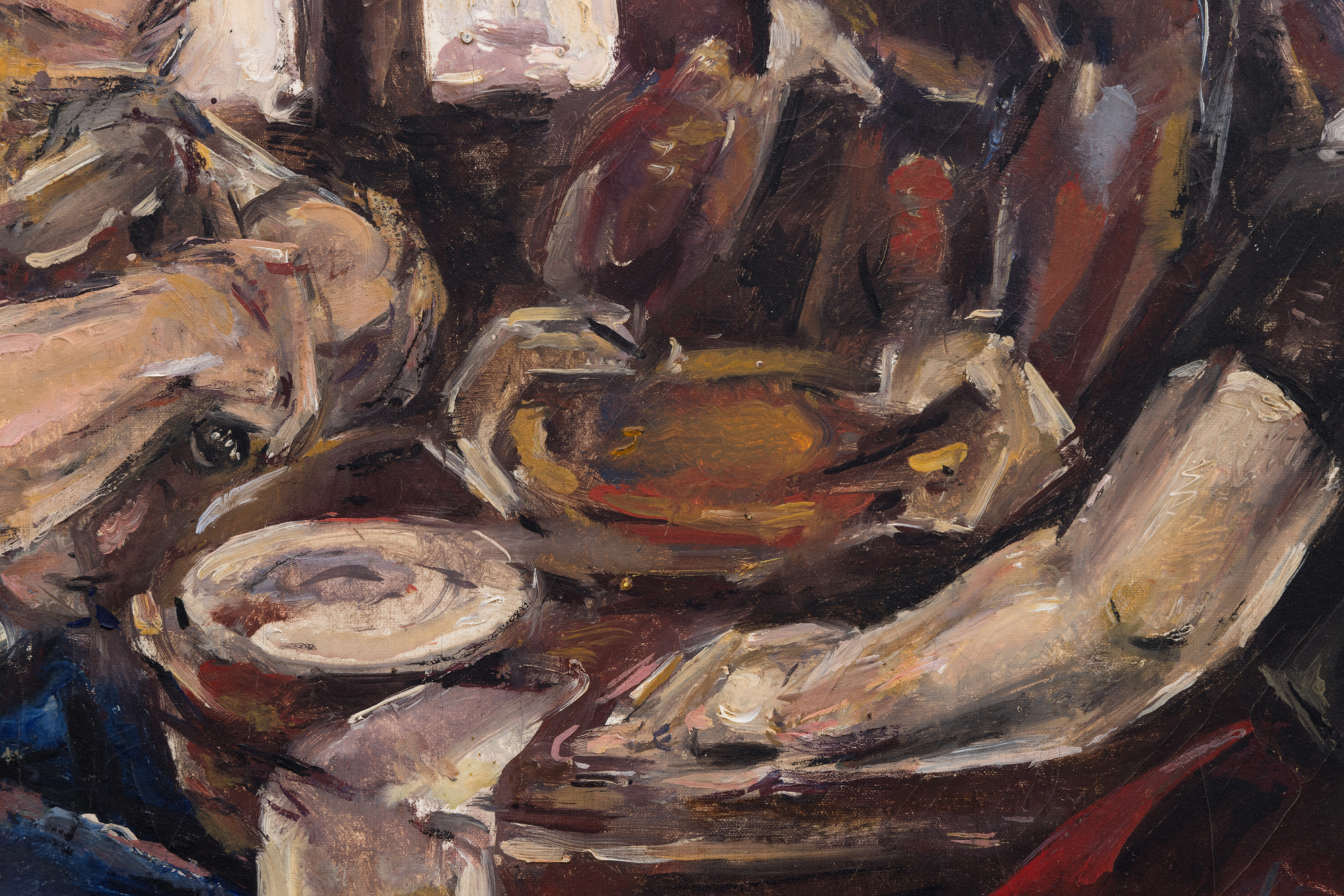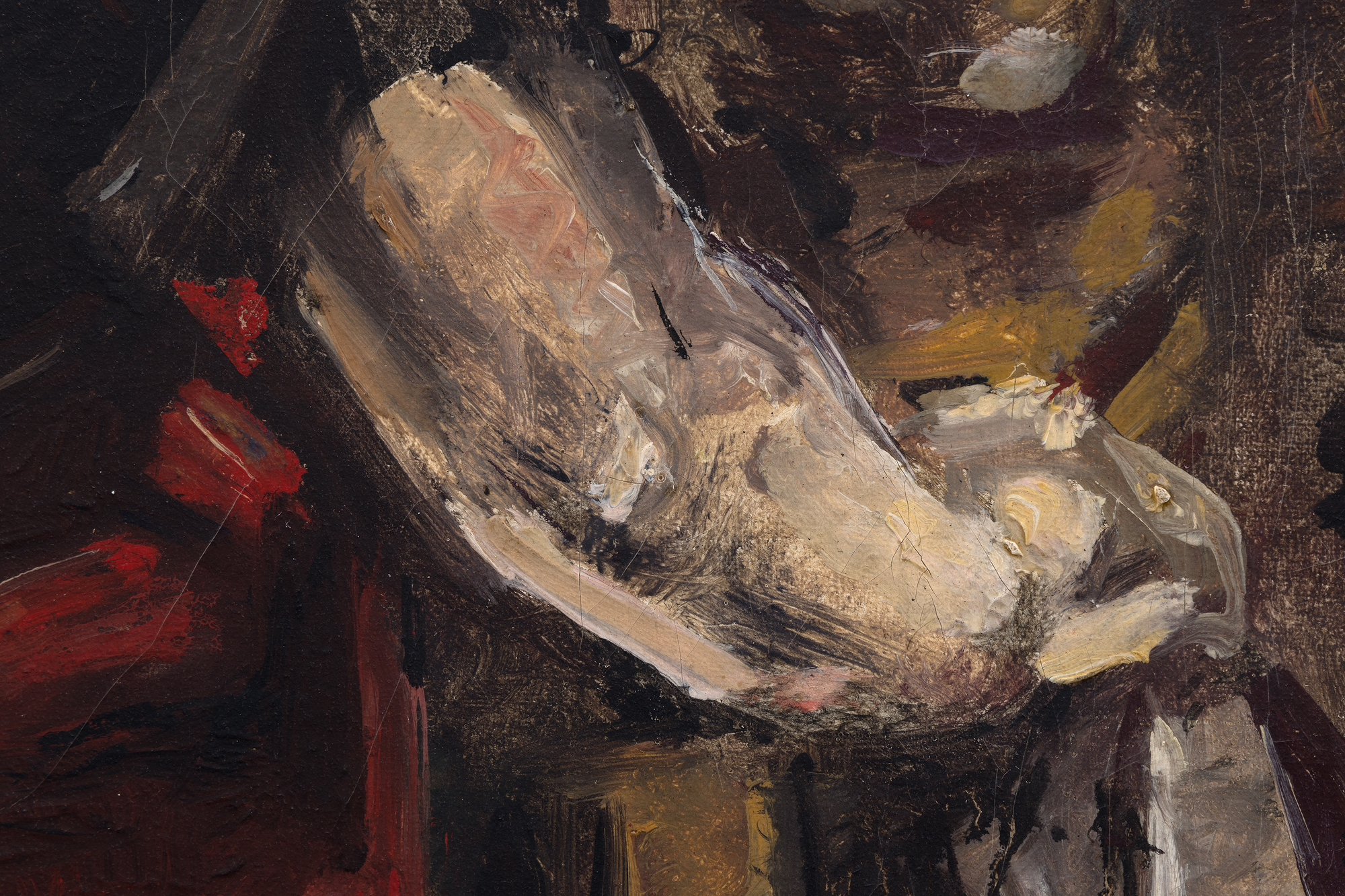MARIA BLANCHARD (1881-1932)










Provenance
Collection of Carmen Egea Gutierrez, Artist's NiecePrivate Collection, by descent from above
135,000
Blanchard’s work after 1921 progressively bridged the gap between the rigid forms of early Cubism and a more emotive, personal representation of her subjects. Geometric rigors are present, but the scene's naturalistic light and volumetric composition echo Cézanne's influence. The sharp brushstrokes and angular figures evoke a sense of protection, reflecting Blanchard's intention to shield the inner spirit of her characters from the gaze of others. Yet, her sensitive portrayal invites viewers to connect emotionally with her work, engendering a sense of intimacy and quiet communion. Despite the somber palette, there is a subtle warmth, with the figures' inner spirit shielded from judgment, much like those in van Gogh's painting. Yet in synthesizing elements of Cubism, Blanchard added emotional complexity to the rural themes van Gogh explored, making her contribution distinct yet reflective of earlier artistic traditions.


